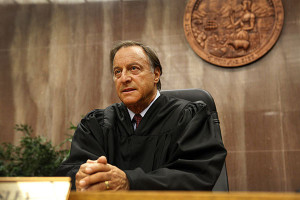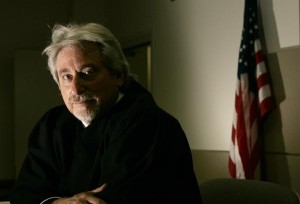Unlike L.A., Some Courts Cut The Cutting
Gay Marriage Ruling Begins A Process
Juvenile Court Judge Feeling Crappy About Justice System
L.A. Co. Layoffs Came Despite Increased Funding
San Diego County Documents Part Of Courts Crisis
Iranian TV News Still Covering Court Cuts
You can see the report (it’s in English) here.
Court Takes Beatings As State Passes Budget
Read the report here.
‘Hell Week’ Ends With Hundreds Of Friday Firings
Balanced budget? ‘Too little, to late’ for L.A. County court
While the Governor and legislators celebrate their $96.4 billion budget deal, workers at L.A. County court are waiting for their pink slips.
According to an L.A. Times story today: “The Los Angeles County Superior Court plans to eliminate more than 500 jobs by the end of the week in a sweeping cost-cutting plan to close a projected $85-million budget shortfall for the next fiscal year.” The story also includes a breakdown of the layoffs.

Photo credit: Al Seib/L.A. Times as part of the L.A. Times coverage of the L.A. County Court layoff story
As part of his deal with legislators, the governor agreed to restore $63 million to the courts in the budget that will take effect July 1– well short of the $100 million the Legislature wanted.
“We are glad that restoration of trial court funding has begun,” said L.A. County Superior Court presiding judge, David Wesley, in a statement. “But it is a shame that it is too little, too late, to stop the awful reductions in access to justice that state funding cuts have brought.”
Read the full story here.
Budget deal reached, but with compromises
Gov. Jerry Brown and lawmakers led by Senate President Pro Tem Darrell Steinberg and Assembly Speaker John Perez have reached a deal. The full Senate and Assembly must approve the budget by a midnight Saturday deadline.
The deal does not come without compromises. The Mercury News reports that legislative budget committee chair Sen. Mark Leno, D-San Francisco, and vice chair Assemblyman Bob Blumenfield, D-San Fernando Valley, both said at a legislative budget committee meeting late Monday that they agreed to Brown’s lower financial estimate “to reach a deal.”
“As all budgets are acts of compromise, this budget would be no exception,” Leno was quoted as saying in the story.
One of the compromises has hit the judicial budget. According to the story, $63 million will fund trial courts, less than the $100 million the Legislature wanted.
Read the Mercury News story here.

